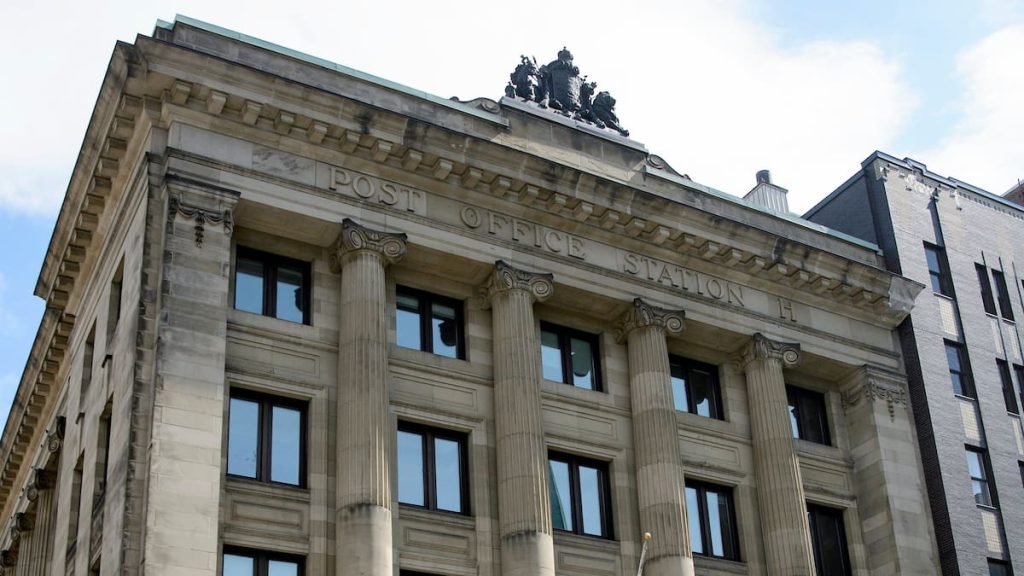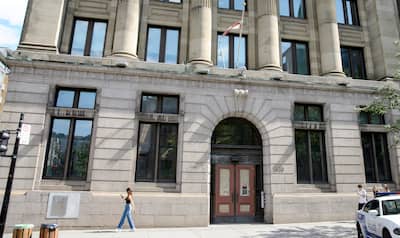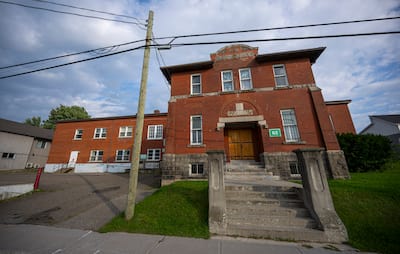
Ottawa today unveils the first list of nearly fifty lands and buildings across the country, five of which – including the former offices of the National Film Board – are located in Quebec.
The goal is ambitious: In her 2024 budget, Minister Chrystia Freeland announced the government's intention to create 250,000 new housing units by drawing on “surplus” federal assets across the country.
Some of the buildings in the vast inventory are unused or completely abandoned. Others are federally owned land, on which homes will rise, at affordable prices, we're told.
This is a vast new project, the details of which will come over time. The federal ministers of supply, Jean-Yves Duclos, and housing, Sean Fraser, will unveil the main points at the start of a cabinet retreat on Sunday.
Former NFB Complex
The former National Film Board (NFB) complex, visible from the highway towards the Montreal airport, is arguably the most familiar building to Quebecers (and one of the most imposing) on the list.
The legendary beige brick building has not been used since the NFB's operations moved to the city center in 2019. It was built in 1956 and was built on a vacant lot, according to the Heritage Montreal organization.
The city of Montreal already wants to turn it into a school and technology hub. In 2022, the complex was transferred to the Canada Lands Company (CLC), which is involved in the realignment efforts of the Trudeau government's plan.
It is too early to know how many housing units will be created there.
Luxury buildings
A lucky few will one day live in the Lyons Lessard building in the heart of downtown Montreal.
Decorated with columns and overlooked by coats of arms, this building, when it was created, was in the early 20th centurye century, a post office. In recent years there have been offices of the Canadian Armed Forces.
Other Quebecers build their lives at the Rimouski military arsenal, whose construction lasted from 1910-1911. This is another building belonging to the National Defence, officially classed as a heritage building, which will be converted into housing.
“The interest of the building lies in its imposing and well-proportioned red brick facades, with details in smooth or rough limestone that provide a contrast of colors and textures,” we read in the Directory of Federal Heritage Designations.
Piecemeal contracts
Starting this week, housing associations, cooperatives, builders, developers and municipalities will be able to visit the list of 56 buildings and find a point of contact with the federal government to start negotiations.
This is just the first list: hundreds of other properties will gradually appear on the federal list over the coming years.
Despite the sometimes laborious process involved in getting real estate projects off the ground, we're told the federal government's intention is to get there “as quickly as possible.”
Ottawa will own all these properties to ensure “affordability,” we're told.








More Stories
Sportswear: Lolle acquires Louis Garneau Sports
REM is still innovative enough to foot the bill
A trip to the restaurant with no regrets for these customers